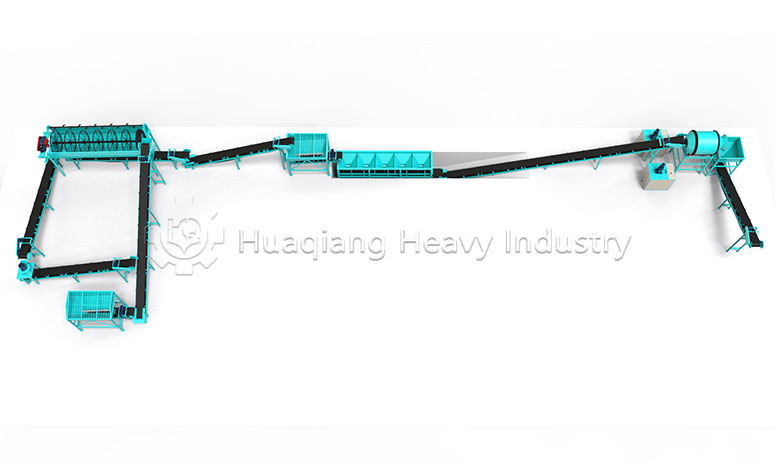NPK blending fertilizer production lines are a key modern process for compound fertilizer manufacturing. Their production efficiency directly impacts both fertilizer quality and cost.
1.Raw Material Factors
Particle Size Compatibility: Significant differences in particle size between raw materials can lead to segregation. It’s recommended to keep particle sizes within the 2-4mm range.
Moisture Content Control: Raw material moisture should be kept below 1.5%. Higher levels increase the risk of caking and blockages.
Raw Material Purity Standards: High impurity content increases the load on the screening process and reduces overall efficiency.
2.Equipment Configuration and Process Optimization
Accuracy of Automatic Batching Systems: High-precision sensors can keep batching errors within ±0.5%.
Level of Automation Control: PLC control systems enable continuous production and reduce manual intervention.

3.Production Management
Production Scheduling: Well-planned batch scheduling minimizes equipment idle time between runs.
Quality Control Systems: Online detection allows for timely adjustments to process parameters, reducing rework.
4.Environmental Factors
Workshop Temperature and Humidity Control: Maintain temperature between 10-30°C and relative humidity at or below 60%.
Dust Collection System Efficiency: Effective dust removal can reduce equipment wear by up to 30%.
Through systematic optimization, NPK blending fertilizer production line efficiency can be effectively increased while reducing energy consumption, creating greater economic benefits for the company. Continuously improving production processes and management practices remains central to maintaining high efficiency in NPK blending fertilizer production line operations.